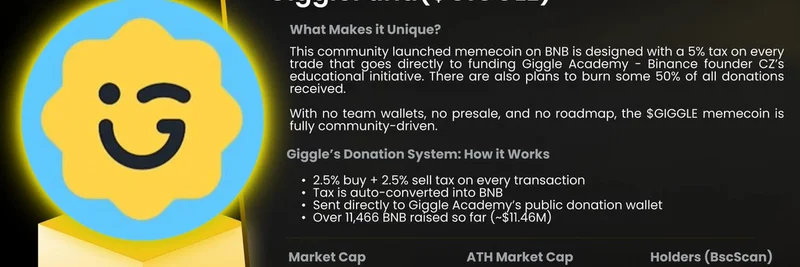BSC News recently dropped an intriguing tweet highlighting a full analysis of Telcoin ($TEL), calling it one of the most ambitious projects in crypto. If you're into blockchain innovations that go beyond memes, this one's worth a look. The tweet links to a deep dive on BSC News, and we've broken it down here to give you the essentials. Check out the original tweet here.
What Is Telcoin and Why Does It Matter?
Telcoin is all about bridging the gap between traditional telecom services and cutting-edge blockchain tech. Founded back in 2017 in Singapore, it started as an ERC-20 token on Ethereum, targeting the massive $700 billion remittances market. Remittances? That's basically sending money across borders, often to family in developing countries, and it's notoriously expensive with traditional banks.
What sets Telcoin apart is its partnership with mobile network operators (MNOs) – think big players like Vodafone or Orange. With access to over 5 billion mobile subscribers worldwide, Telcoin uses phone numbers instead of clunky wallet addresses to make crypto accessible. No need for a bank account; just a phone. This is huge for the 1.4 billion unbanked adults out there.
Over the years, they've expanded from simple remittances to a full DeFi (decentralized finance) ecosystem. DeFi means financial services without middlemen, like lending or trading crypto directly. After a security hiccup in 2023 where they quickly recovered all funds, they've beefed up security and even snagged SOC 2 Type I certification in May 2025. Now, their big vision is the "Internet of Money" – a regulated blockchain network powered by telecom giants.
The Brains Behind Telcoin
Leading the charge is CEO Paul Neuner, a telecom veteran with over 20 years in the game. He founded Mobius Wireless Solutions before Telcoin, seeing MNOs as the perfect entry point for mass DeFi adoption. Co-founder Claude Eguienta adds fintech smarts, and the team has grown to over 50, with key hires in compliance and strategy. They've got advisors from telecom heavyweights like Viettel Group, and they're setting up a digital asset bank in Nebraska, USA.
Tech Stack and Key Features
Right now, Telcoin runs on the Polygon network for cheap, fast transactions – we're talking sub-cent fees and quick settlements. But the real game-changer is the upcoming Telcoin Network, an EVM-compatible Layer 1 blockchain. EVM? That's Ethereum Virtual Machine, meaning it can run apps built for Ethereum seamlessly.
Validators on this network will be GSMA-member MNOs, creating a Decentralized Physical Infrastructure Network (DePIN). This setup promises better scalability (up to 1,000 transactions per second), global reach, and built-in compliance. They've got bridges to other chains like Arbitrum, handling millions in volume monthly.
Security is top-notch post-2023: AI fraud detection, annual audits by Certik, and multi-sig wallets. Their products include:
- Telcoin Wallet: Send money to e-wallets in 20+ countries, trade DeFi, and earn yields – all via your phone.
- Digital Cash Stablecoins: Fiat-backed tokens like eUSD or eCAD to avoid crypto volatility in payments.
- DeFi Suite: Swaps, lending, and farming without custodians.
The roadmap? Alpha Mainnet launched in May 2025, pilot testnet in July, and Beta Mainnet by Q4. Full migration from Polygon is slated for 2026.
Partnerships Driving Growth
Telcoin's secret sauce is its telecom ties. They're working with GSMA members and plan 50+ MNO validators by year's end. Recent collabs include:
- Powerhive for blockchain-based EV financing in emerging markets.
- A game alliance integrating $TEL into 1,300+ titles.
- STORM Partners for global marketing.
These partnerships blend Web2 (traditional internet) with Web3 (blockchain), making adoption smoother.
Tokenomics: How $TEL Works
$TEL is the fuel for the ecosystem – used for fees, staking, and rewards. Capped at 100 billion total supply, with about 91 billion circulating as of July 2025. No more tokens will be minted, which helps control inflation.
The Stake & Refer program lets you lock up $TEL to earn from network fees via referrals. It's incentivized growth, though some call it pyramid-ish – always DYOR (do your own research).
As of mid-July 2025, $TEL was trading around $0.007, with a $651 million market cap and solid volume. Staking offers 5-8% APY on stablecoins, and TVL (total value locked) hit $150 million in June.
2025 Outlook: What's Next for Telcoin?
2025 is shaping up big. The pilot testnet kicked off in July, with Beta Mainnet coming Q4. September brings the launch of their U.S. digital asset bank under new regs. Remittance volumes are at $50 million quarterly, wallet downloads over 200,000, and user growth up 150% year-over-year.
With crypto regs evolving – like the GENIUS Act in the U.S. – Telcoin's compliance focus positions it well. If you're betting on real-world utility over pure hype, $TEL could be a sleeper hit. Keep an eye on their official site or follow @telcoin on X for updates.
Whether Telcoin sparks a meme-like frenzy or stays utility-focused, it's pushing boundaries in crypto. What do you think – ambitious enough to change the game?


